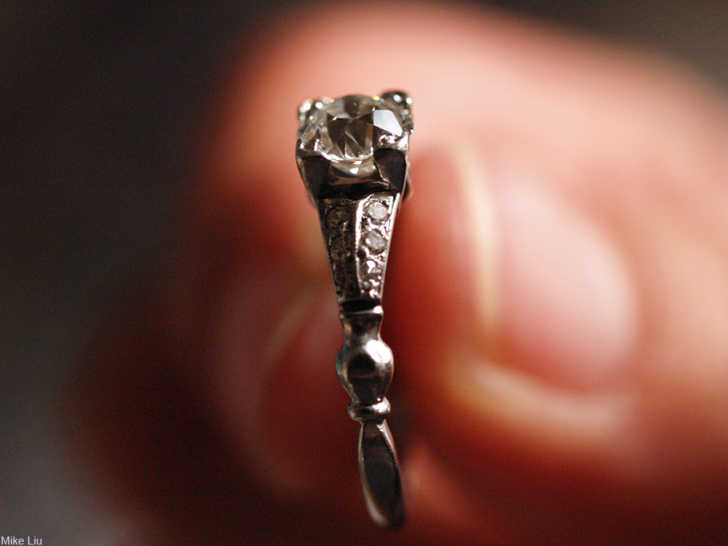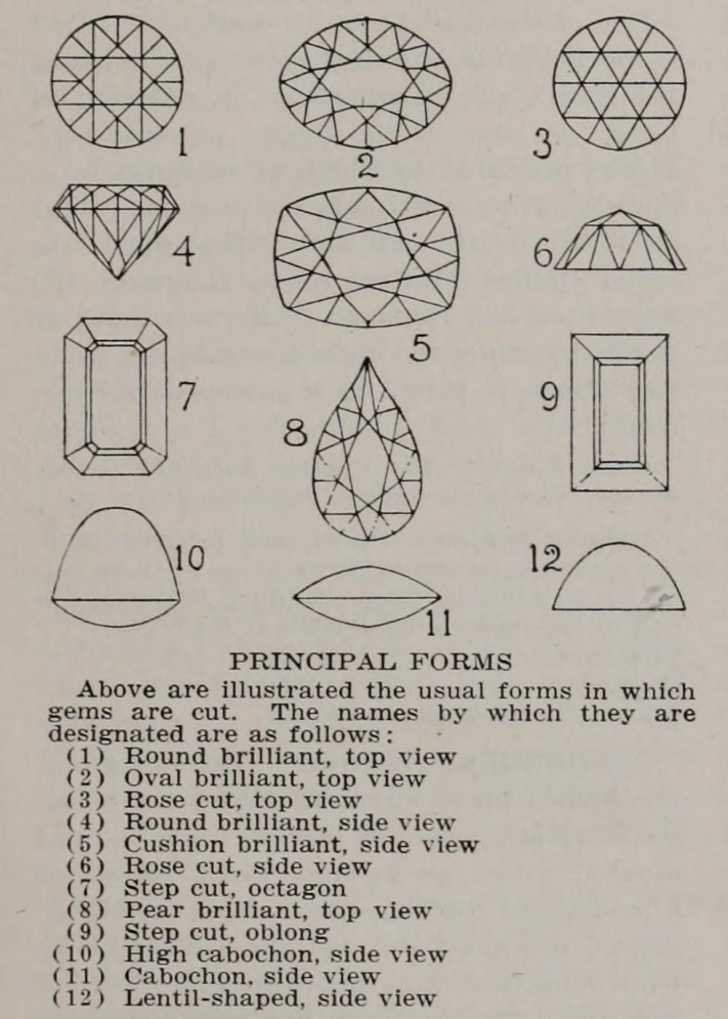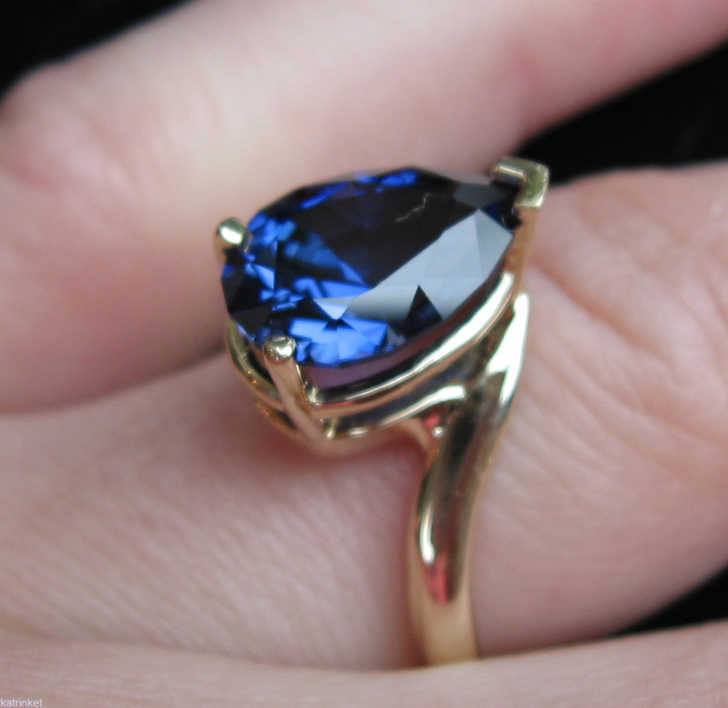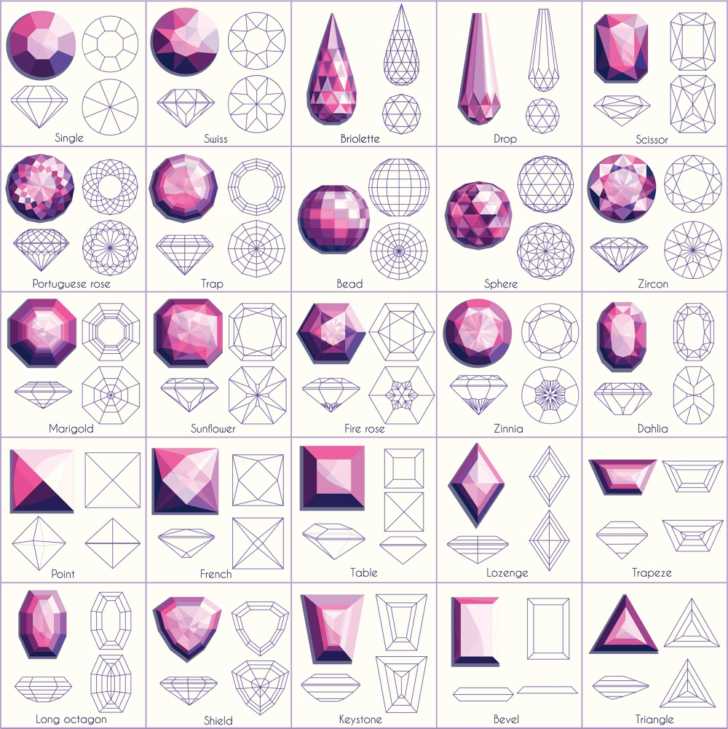How To Identify Different Cuts of Gemstones
There are a lot more cuts than most people know about.
The wearing of diamonds on jewelry goes back to ancient peoples, with members of the Roman Empire wearing stones masterfully set in gold. Following a dry spell of diamonds in Europe, the Venetians invigorated the art of jewelry making by cutting diamonds and other precious stone into shapes, giving them facets that reflected the light in intoxicating ways. Since then a variety of cutting styles and shapes has resulted in a dizzying array of stone settings. Learn more about the different types of stone cuts below.

Old Cuts
The so-called old cuts represent an older way of cutting stones. These stones will typically have fewer cuts than modern style stones, which makes them appear less brilliant in the light. For some people this is unappealing, but when buying an older ring knowing about the different stones can help to determine the authenticity. If an old ring with supposedly no alterations has a particularly sparkling stone, the something might not be right. Old cuts were created in the era before electricity when the gem cutters would have made each tiny cut by hand with limited visibility.

Stone cuts in this category are old European, old mine (a modified version of which is the cushion cut), and Swiss cut. The cushion cut has become very popular in recent years, but has its origins in the 16th or 17th century. Old cuts are rare because they are no longer made, but can be of poorer grade with less fire. Because of this mix of pros and cons, some old cut gems are worth more than their modern counter parts and some are worth less.
Step Cut
The step cut (or trap cut) represents a square or rectangular shape of stone, with cuts made in linear lines like steps. This type of cut maximizes the weight of the stone since round stones result in more waste. Some of the more well known step cuts include the table cut, Carre cut, emerald cut, and baguette cut. Baguettes are sometimes used as accent stones around a larger center stone and for that reason they have become more common in the modern era. They feature a pavilion (the bottom of the stone), but it does not come to a point (cutlet).

The Asscher cut diamond was created in the early 1900s by the Asscher brothers and is a modified version of the emerald cut, with diagonal lines emanating from the cutlet of the pavilion.
Shaped Cuts
The shaped cuts stray from the classic round, square, and rectangle stones. Some of these cuts include shield cut, trillion, heart cut, pear cut, marquis (or navalis- first used in a ring for King Louis XV in 1745), and briolette. Because of the rounded shapes, each different style requires a different cutting pattern and an additional skillset to achieve.

Briolettes are rounded like a teardrop and are faceted on all sides. This type of stone is more commonly used for drops on earrings and necklaces, but occasionally is also used in ring making.
Brilliant Cut
Brilliant cuts are the most sparkling of all diamond cuts. They have the most facets and require the most work to complete, all of which is precision work that comes at a price. This more modern style is the most expensive type of cut in the world, but many people find it’s worth the money for all the fire and sparkle in the stones.

Flat-Back
When a stone doesn’t have a pavilion, but instead has a flat back, a different set of cuts are used. Some of these styles are lentil (or bullet) cabochons and standard rose cut. Often these cuts are used for stones other than diamonds since they can reduce the fire in a diamond. By contrast, a more opaque stone like a natural ruby or sapphire already doesn’t have as much depth to lose with one of these styles of cut.
SKM: below-content placeholderWhizzco for DOT

